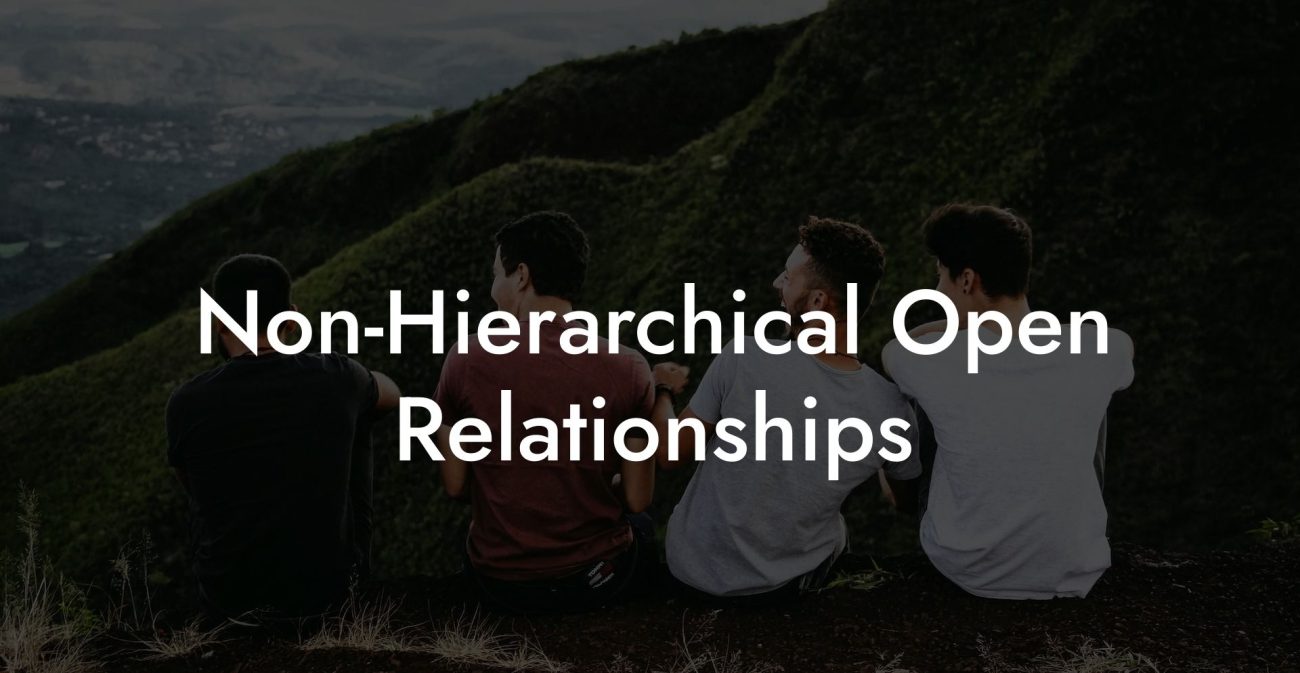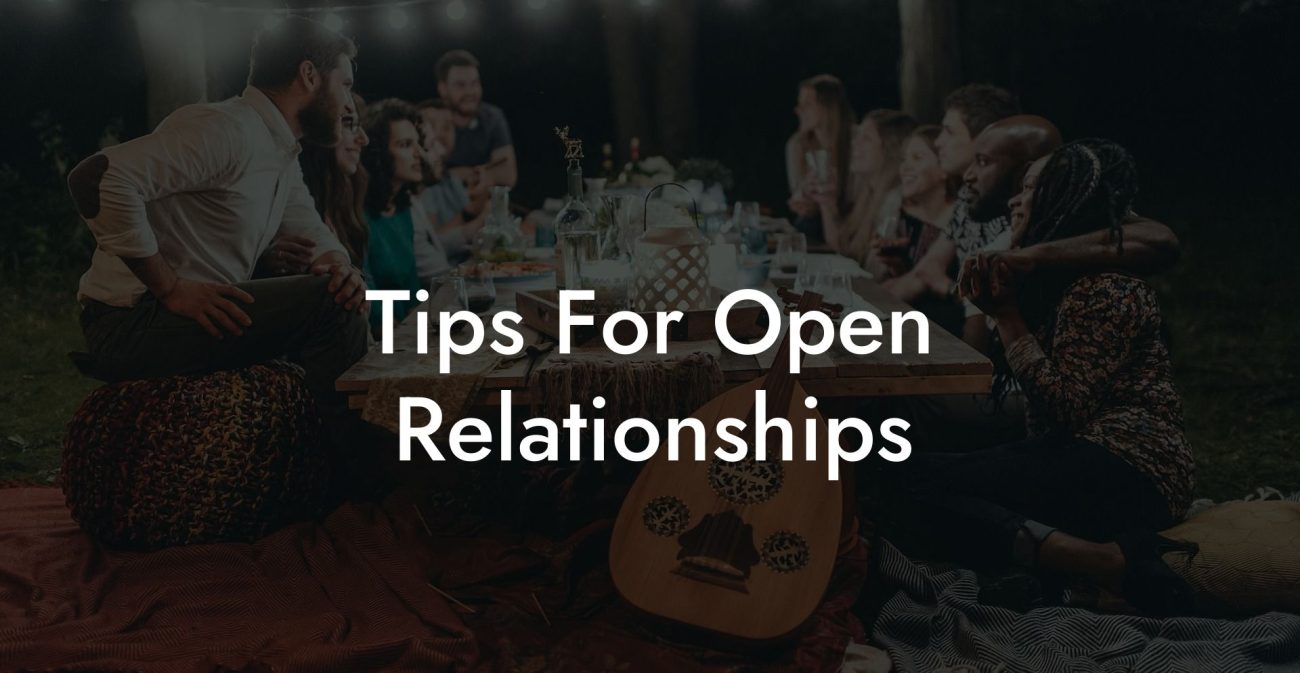Guide to Polyamorous Orientation Course

Imagine a dazzling festival of human connection, a sprawling carnival of intimacy where every conversation sparkles like neon, every touch is a brushstroke on the canvas of your soul, and the rules of conventional love are tossed aside like yesterday’s confetti. This isn’t your typical relationship seminar; it’s an immersive Polyamorous Orientation Course designed to transform your approach to love and connection. Here, you’ll embark on a journey that will challenge your assumptions, ignite your passions, and open your heart to an infinite spectrum of possibilities. Prepare to dive deep into a world where ethics, self-awareness, and open communication form the bedrock of relationships that are as diverse as they are deeply fulfilling.
Quick Links to Useful Sections
- Understanding the Polyamorous Orientation Course
- What Is a Polyamorous Orientation Course?
- Why Consider a Polyamorous Orientation Course?
- The Need for a New Paradigm
- Benefits of Enrolling
- Course Structure and Topics Covered
- Module 1: Introduction to Polyamory
- Module 2: Communication Essentials
- Module 3: Boundary-Setting and consent
- Module 4: Emotional Management and Self-Care
- Module 5: Navigating Practical Logistics
- Module 6: Creating Your Personal Polyamorous Blueprint
- Learning Outcomes and Skills You Will Gain
- Who Should Enroll in the Course?
- How to Prepare for the Course
- Self-Reflection and Goal Setting
- Gathering Resources
- Engaging with the Community
- Real-Life Success Stories
- Case Study: Jamie’s Transformative Journey
- Case Study: Taylor’s Blueprint for Balanced Love
- Expert Insights
- FAQ: Your Polyamorous Orientation Course Questions Answered
Understanding the Polyamorous Orientation Course
What Is a Polyamorous Orientation Course?
A Polyamorous Orientation Course is a comprehensive educational program crafted for individuals and couples interested in exploring the world of ethical non-monogamy. Unlike traditional dating workshops, this course is designed to equip you with the knowledge, tools, and mindset necessary to navigate the intricate dynamics of polyamorous relationships. It delves into the philosophy of polyamory, offers practical guidance on communication and boundary-setting, and provides insights into the emotional, legal, and logistical aspects of managing multiple consensual partnerships.
Whether you’re a curious newcomer or someone already immersed in poly life seeking to refine your approach, the course aims to empower you to make informed decisions, embrace vulnerability, and foster authentic, thriving connections. Participants engage in interactive sessions, group discussions, and reflective exercises that pave the way for a deeper understanding of both self and others.
Why Consider a Polyamorous Orientation Course?
The Need for a New Paradigm
In a world where traditional relationship models have long dictated the norms of romance, many are finding that the one-size-fits-all approach no longer fits their hearts or lifestyles. The Polyamorous Orientation Course emerges as a beacon for those ready to break free from conventional constraints and embrace a model that honors individual autonomy, multiple loving connections, and ethical non-monogamy.
This course isn’t merely about managing logistics or avoiding conflicts; it’s about transforming the way you perceive love. It teaches you to see relationships as expansive, evolving networks rather than isolated bonds. The course provides the language, frameworks, and practical tools necessary to explore and sustain multiple relationships in a way that is respectful, consensual, and enriching for everyone involved.
Benefits of Enrolling
- Increased Self-Awareness: Gain clarity on your desires, boundaries, and emotional triggers through reflective exercises and guided discussions.
- Enhanced Communication Skills: Learn effective communication techniques that facilitate honest dialogue and help prevent misunderstandings.
- Practical Tools: Receive actionable strategies for scheduling, boundary negotiation, and conflict resolution, ensuring that your relationships remain healthy and balanced.
- Community Connection: Join a network of like-minded individuals and couples who share similar values and challenges, creating a supportive environment for growth.
- Empowerment: Develop the confidence to redefine love on your own terms, breaking free from societal norms and embracing a more authentic way of relating.
Course Structure and Topics Covered
Module 1: Introduction to Polyamory
The course begins with an exploration of polyamory as both a philosophy and a lifestyle. You’ll learn about its historical roots, cultural significance, and the evolution of ethical non-monogamy in modern society. This module sets the stage by challenging conventional ideas about love and commitment.
Topics include:
- The myth of limited love
- Historical examples of non-monogamous cultures
- The evolution of relationship norms in the 21st century
- Defining ethical non-monogamy
Module 2: Communication Essentials
Effective communication is the lifeblood of any relationship, and in polyamory, it is absolutely critical. In this module, you’ll delve into techniques such as active listening, using “I” statements, and conflict resolution strategies. You’ll also explore the importance of regular check-ins and how to create safe spaces for honest dialogue.
Topics include:
- Techniques for effective communication
- Strategies for regular check-ins and feedback
- Tools for facilitating group and one-on-one conversations
- Understanding and managing difficult emotions
Module 3: Boundary-Setting and consent
boundaries are essential for maintaining healthy relationships, especially when multiple connections are involved. This module teaches you how to set clear, flexible boundaries and continuously renegotiate them as relationships evolve. You’ll learn about the nuances of informed consent and the importance of respecting each partner’s autonomy.
Topics include:
- Establishing and revisiting personal boundaries
- The ethics of informed consent
- Strategies for negotiating changing needs
- Creating written or digital agreements
Module 4: Emotional Management and Self-Care
Navigating multiple relationships can stir up complex emotions such as jealousy, insecurity, and vulnerability. This module focuses on emotional self-awareness and techniques for managing difficult feelings. Through guided journaling, mindfulness exercises, and group discussions, you’ll learn to balance your emotional energy and prioritize self-care.
Topics include:
- Mindfulness and meditation techniques
- Journaling for self-reflection
- Identifying and managing emotional triggers
- Strategies for maintaining personal well-being
Module 5: Navigating Practical Logistics
Beyond the emotional and philosophical aspects, polyamorous relationships require effective practical management. This module covers time management, digital tools for scheduling, and strategies for balancing your commitments. You’ll also explore legal and financial considerations that may affect your relationships.
Topics include:
- Using digital tools for organization (calendars, apps, etc.)
- Time management and scheduling strategies
- Legal and financial aspects of non-traditional relationships
- Building a support network and community resources
Module 6: Creating Your Personal Polyamorous Blueprint
The final module is all about synthesizing what you’ve learned to create a personal roadmap for your polyamorous life. You’ll develop a personalized “blueprint” that outlines your relationship goals, boundaries, communication strategies, and self-care practices. This blueprint is a living document that you can revisit and revise as your relationships evolve.
Topics include:
- Developing a personal polyamorous philosophy
- Setting long-term relationship goals
- Creating and updating your poly blueprint
- Strategies for continuous learning and adaptation
Learning Outcomes and Skills You Will Gain
By the end of the Polyamorous Orientation Course, you will have a robust toolkit for managing the complexities of multiple relationships. You’ll be equipped to:
- Communicate effectively with multiple partners using proven techniques.
- Set and adjust boundaries in a way that respects all parties.
- Manage difficult emotions and navigate jealousy with confidence.
- Utilize digital tools for organizing your time and commitments.
- Develop a personalized plan for your polyamorous life that evolves with you.
- Understand the legal, financial, and logistical aspects of non-traditional relationships.
- Build a supportive network that enhances your overall well-being.
Who Should Enroll in the Course?
This course is ideal for individuals and couples at any stage of their polyamorous journey. Whether you are just starting to explore polyamory, are already involved in multiple relationships, or are looking to refine your skills and deepen your understanding, this course offers valuable insights and practical tools. It’s also a great resource for those curious about non-monogamous lifestyles who want to challenge traditional relationship norms and expand their horizons.
If you’re committed to self-improvement, open communication, and building healthy, ethical relationships, then this course is for you.
How to Prepare for the Course
Self-Reflection and Goal Setting
Before diving into the course, spend some time reflecting on your current relationship patterns, emotional needs, and personal goals. Consider journaling about what you hope to achieve, be it better communication, clearer boundaries, or increased emotional resilience. Setting clear goals will help you get the most out of the course.
Gathering Resources
Equip yourself with foundational texts and digital tools that will complement your learning. Books like "The Ethical Slut" and "More Than Two" provide essential context, while apps for scheduling and journaling can help you track your progress throughout the course.
Engaging with the Community
Many courses offer online forums or local meet-ups where you can connect with other participants. Engaging with a community of like-minded individuals not only enriches your learning experience but also provides ongoing support as you implement what you’ve learned in your own relationships.
Real-Life Success Stories
Case Study: Jamie’s Transformative Journey
Jamie entered the course feeling overwhelmed by the complexities of managing multiple relationships. Through the course’s structured modules on communication and boundary-setting, Jamie learned how to articulate personal needs and navigate difficult emotions. By applying techniques from the self-reflection module, Jamie was able to reframe jealousy as an opportunity for growth. Today, Jamie credits the course with transforming not only their approach to polyamory but also their overall emotional well-being.
Case Study: Taylor’s Blueprint for Balanced Love
Taylor, a polyamorous individual juggling several relationships, struggled to maintain balance and self-care. After enrolling in the Polyamorous Orientation Course, Taylor developed a personalized blueprint that restructured their time and energy allocation. With new strategies for digital organization and regular check-ins, Taylor managed to create a more harmonious life, where every relationship thrived without causing burnout. Taylor’s story is a testament to the power of structured learning and community support.
Expert Insights
Relationship experts and polyamory coaches emphasize that the key to successful polyamorous relationships lies in continuous learning and self-reflection. Dr. Elena Rivera, a therapist specializing in ethical non-monogamy, explains, “This course provides the essential tools for navigating the emotional complexities of polyamory. It empowers individuals to take control of their relationships through honest communication and self-awareness.”
Relationship coach Marcus Lee adds, “By challenging traditional norms and embracing a flexible approach to love, participants learn that the journey of polyamory is one of continuous evolution. The skills acquired in this course, like effective communication and boundary-setting, are invaluable not just in relationships, but in all areas of life.”
FAQ: Your Polyamorous Orientation Course Questions Answered
1. What is a Polyamorous Orientation Course?
It’s an educational program designed to help individuals and couples explore, understand, and manage polyamorous relationships through structured learning, practical tools, and community support.
2. Who should consider taking this course?
The course is ideal for anyone curious about polyamory, whether you’re new to non-monogamy or already practicing polyamory and seeking to enhance your relationship skills.
3. What topics are covered in the course?
Topics include the philosophy of polyamory, communication techniques, boundary-setting, emotional management, practical logistics, legal considerations, and creating a personalized poly blueprint.
4. How will this course help me in my relationships?
You’ll gain practical tools for managing multiple relationships, enhance your communication skills, learn to set and adapt boundaries, and develop a deeper understanding of your emotional needs, all of which can lead to healthier, more fulfilling connections.
5. Is the course suitable for couples as well as individuals?
Absolutely. The course is designed to accommodate both individuals and couples, offering insights and exercises that benefit all forms of polyamorous relationships.
6. How long does the course last?
The course duration can vary, but many programs run for several weeks to a few months, allowing ample time for in-depth exploration and practical application of the concepts.
7. Are there interactive components in the course?
Yes, most courses include interactive elements such as group discussions, workshops, and self-reflection exercises to help reinforce learning and foster community engagement.
8. Will I receive any materials or resources to help me after the course?
Many programs provide comprehensive resource guides, digital toolkits, and access to online communities, ensuring you have ongoing support as you implement what you’ve learned.
9. Can this course help me if I’m already in a polyamorous relationship?
Definitely. Even if you’re already practicing polyamory, the course can offer fresh perspectives, help you address ongoing challenges, and provide strategies for continuous personal and relational growth.
10. Where can I find more information about the Polyamorous Orientation Course?
For more details, check out dedicated websites, online polyamory communities, or contact organizations that specialize in relationship education and non-monogamous lifestyles.
Resources and Community Support: Your Next Steps in Polyamorous Dating
- "The Ethical Slut" by Dossie Easton & Janet Hardy – A foundational book exploring the principles of ethical non-monogamy and polyamory.
- "More Than Two" by Franklin Veaux & Eve Rickert – Offers practical advice and real-life stories on managing multiple relationships.
- Podcasts: "Multiamory" and other poly-focused shows provide expert insights and personal narratives to guide your journey.
- Online Communities: Engage with polyamorous forums on Reddit (e.g., r/polyamory) and join Facebook groups dedicated to polyamory.
- Workshops and Webinars: Look for live events and virtual workshops that offer interactive learning and opportunities to connect with polyamorous peers.
- Therapy and Counseling: Consider consulting a relationship therapist or coach experienced in polyamorous dynamics for personalized guidance.
By embracing a polyamorous orientation course, you’re taking a bold step toward understanding and optimizing your approach to love. With the right tools, knowledge, and community support, you can confidently navigate the complexities of multiple relationships and create a life filled with authentic, abundant connection.
Lost & confused by all of the terms, types and seemingly made up 3 letter acronyms?? We've got you. Check out our Ethnical Non-Monogamy Dictionary >>
Useful Interruption: Not sure which relationship vibe fits you best? Take our Relationship Test, it’ll give you the real insight into your natural relationship style. Then, dive into our binge-worthy guides (from the tried-and-true to the “wait, that’s a thing?”) and find the perfect relationship type for your life:
- Monogamy
- Open Relationships
- Ethical Non-Monogamy
- Solo Polyamory
- Non-Hierarchical Polyamory
- Hierarchical Polyamory
- Relationship Anarchy
- Swinging
Now back to the main article but yeah take the test...












